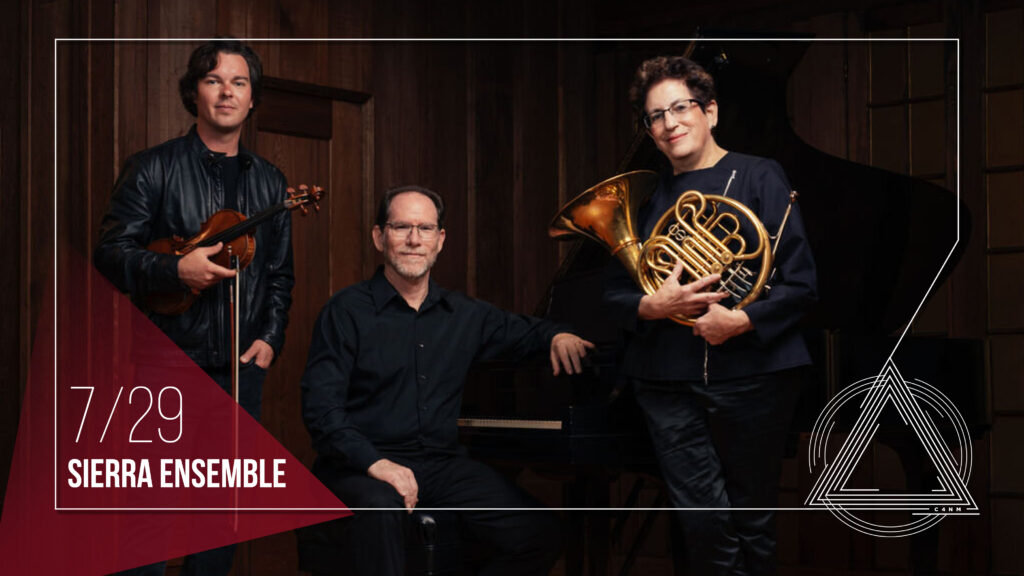Sierra Ensemble performs the San Francisco premiere of Andrés Carrizo’s two short pieces, “Like a Frozen Silver Shimmer“ and “Of Frozen Resonance.” These trio movements employ extended techniques for each instrument, including horn multiphonics, a variety of bowings for the violin, and muting or plucking of strings for the piano. All of these serve to create an unusual and unique and expressive musical environment. This event will be live-streamed from C4NM. To watch open up your browser a few minutes before the concert start time, and find the video on our Facebook page, our YouTube channel, or on this event page. (make sure you refresh!) Donations are kindly accepted in advance and/or during the concert (click “buy tickets” to make a donation).
Eric Ewazen’s Trio for Violin, Horn and Piano was composed in 2012. Written in four movements, and inspired by the Horn Trio of Johannes Brahms, Ewazen strikes a beautiful balance of solo and ensemble writing for all three instruments. While all three take their turn at the forefront, the horn, in particular, evokes an expansive and lyrical landscape with a uniquely American sound.
“And Ezra the Scribe Stood Upon a Pulpit,” by Brian Wilson, also dates from 2012. Wilson employs the horn trio format in both a moving and lively combination of solemnity of music from the synagogue service as well as celebration. In the composer’s words, “With inspiration from American jazz and Hebraic music, one can imagine a distant Duke Ellington in one section. The faster middle section, subtitled “Camel Dance,” gives the impression of Ezra and company coming down from Babylon to Jerusalem….”
The Romance, op 36, by Saint-Saëns is a beautiful miniature for horn and piano. The lilting character in the accompaniment provides a foundation on which the horn is able to shine with long, elegant lines.
Mozart’s Sonata in B-flat major, K. 454, for Violin and Piano, dates from 1784, one of his most productive years. For the premiere of the work, he had written out the part for the violinist but neglected to leave sufficient time to copy out his own, and played from memory with a blank score. The Sonata is equally demanding for both instruments. A slow introduction precedes the opening Allegro. The second movement, Andante, is the true emotional center of the work. The piece ends with a joyful Rondo, marked Allegretto.
